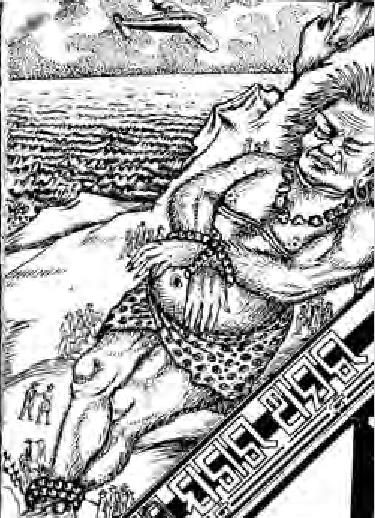In the landscape of Odia literature, E Jugara Asura, written by the noted author Prasad and published in 1947, stands out as a compelling narrative that intricately weaves themes of mythology, morality, and the human experience. This story not only captivates readers with its engaging plot but also serves as a mirror reflecting the societal values and challenges of its time.
The title E Jugara Asura translates to The Demon of This Age, suggesting that the tale revolves around contemporary struggles against formidable obstacles—both external and internal. Prasad uses the concept of ‘asura,’ often associated with demons in Hindu mythology, to represent the darker, menacing forces present in modern society. Through this allegorical approach, the author addresses issues such as greed, corruption, and moral decay, which were particularly resonant in the post-independence era when the nation was grappling with its identity and values.
At the heart of the story is a protagonist who embarks on a journey, not unlike the traditional hero’s quest found in folklore. This character represents the common man, facing the numerous challenges posed by the ‘asura’ of modernity. Prasad crafts a narrative that is both personal and universal, portraying a struggle that many people can relate to in their own lives. The protagonist’s journey is marked by trials that test not only his physical strength but also his moral fabric and inner resolve.
Prasad’s storytelling is notable for its rich imagery and vivid descriptions, which breathe life into the characters and settings. The reader is transported into a world where the boundaries between reality and myth blur. This stylistic choice reflects the influence of traditional Odia storytelling, where narratives often encompass elements of magic and the ethereal. The author’s ability to blend these elements creates a dynamic reading experience that engages the imagination while prompting reflection on real-world issues.
In E Jugara Asura, the interactions between characters are laden with subtext, conveying deeper philosophical reflections. The dialogue often serves as a vehicle for exploring complex ideas about duty, sacrifice, and the nature of evil. Prasad does not shy away from presenting morally ambiguous situations, prompting readers to question the very definitions of good and evil. This depth of character development enriches the story, inviting readers to reflect on their values and beliefs.
The cultural and historical context of the story also adds layers of significance. Published shortly after India gained independence, the narrative can be seen as a commentary on the nation’s aspirations and the challenges it faced in building a new identity. The ‘asura’ becomes a symbol of the obstacles that must be overcome to achieve a brighter future, resonating with the collective consciousness of a society in transition.
Furthermore, Prasad’s portrayal of women in E Jugara Asura is noteworthy. Female characters are depicted as strong and resilient, often guiding the male protagonists and influencing their decisions. This representation reflects a progressive perspective on gender roles, aligning with the broader social changes occurring in India at the time.
Books Info
| Books name | E Jugara Asura / ଏ ଯୁଗର ଅସୁର |
| Author | Prasad |
| No Of pages | 26 |
| Publisher | NA |
| Publication | 1947 |
| Printed At | NA |
| Distributor | NA |

